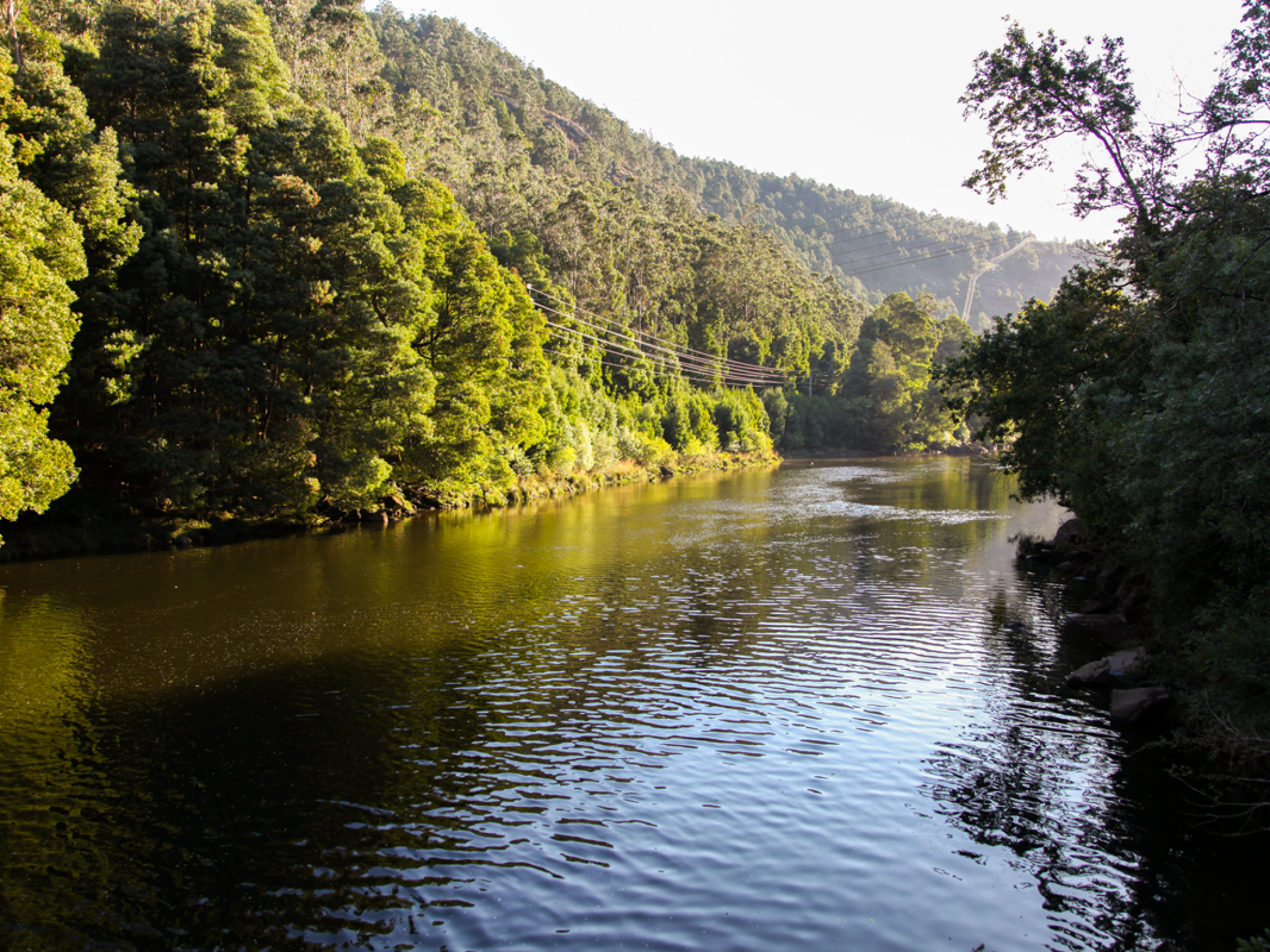The Tambre River features abundant resources; in the past, lamprey fishing was an important source of income. Evidence of this past activity can be seen in the old “rodeiras” or “pesqueiras” (weirs) at the riverbanks. In addition to the beautiful river itself and the winding trails along its banks, it is worth highlighting the “Devesa de Nimo” forest and the hanging bridge.
In the area of the power station, there is a space used as an interpretation centre highlighting the importance of the “lampreeiras” (weirs) and lamprey fishing. The Tambre Reservoir is one of Noia’s best-known and most appreciated spots since it combines indispensable natural resources and important architectural monuments, such as the old hydroelectric power station built in 1932.
The estuary consists of the last section of the river, its mouth, the Tines River (municipality of Outes) and the beginning of the Ria of Muros and Noia. This space features a diversity of environments, enabling a great variety of fauna and flora among which large areas of reeds upriver from Ponte Nafonso stand out. Moreover, the area forms part of the protected Natura 2000 Network.







